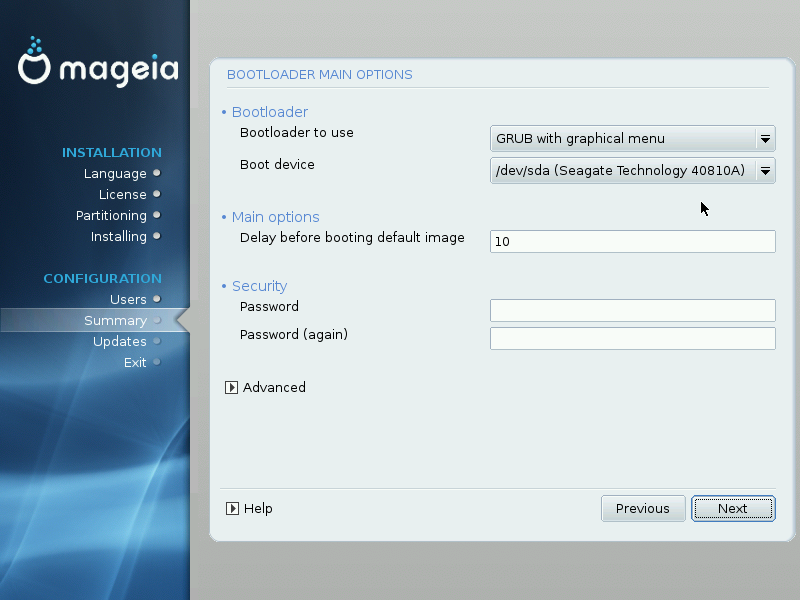
If you prefer different bootloader settings to those chosen automatically by the installer, you can change them here.
You may already have another operating system on your machine, in which case you need to decide whether to add Mageia to your existing bootloader, or allow Mageia to create a new one.
By default Mageia writes a new GRUB bootloader into the MBR (Master Boot Record) of your first hard drive. If you already have other operating systems installed, Mageia attempts to add them to your new Mageia boot menu.
This works correctly in the majority of cases for Linux and Windows® systems.
![[Warning]](./warning.png) | |
Linux systems which use the GRUB2 bootloader (e.g. more recent Debian/Ubuntu derivatives) are not currently supported and will not be recognised. One possible solution for this is to follow the steps explained here Section 18.1, “Adding a GRUB2 based system manually” before installing Mageia next to such a system, however there is no guarantee. If you are already installing Mageia without having taken those steps, (and do not already know the GRUB2 version and/or it's root partition) then install the Mageia bootloader in the root partition for now (see next section), and inspect your GRUB2 based system after rebooting at the end of the installation. Note that you will not yet be able to boot Mageia, however you will be able to use the Mageia install DVD to perform a quick "upgrade install" at a later date to correctly install the bootloader to the MBR. |
If you decide to use an existing bootloader then you will need to remember to STOP at the summary page during the installation and click the Bootloader button, which will allow you to change the bootloader install location.
Do not select a device e.g."sda", or you will overwrite your existing MBR. You must select the root partition that you chose during the partitioning phase earlier e.g. sda7.
To be clear, sda is a device, sda7 is a partition.
![[Tip]](./tip.png) | |
Go to tty2
with Ctrl+Alt+F2 and type |
The exact procedure for adding your Mageia system to an existing bootloader is beyond the scope of this help, however in most cases it will involve running the relevant bootloader installation program which should detect and add it automatically. See the documentation for the operating system in question.


